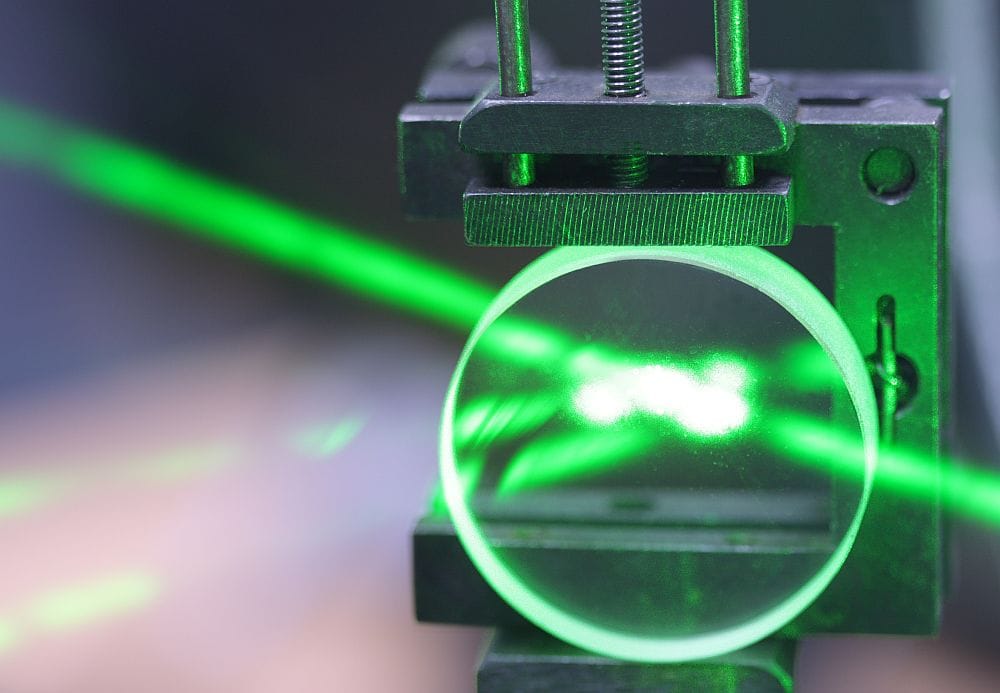
[Image above] Graphene could be a way to expand the spectral operating range of quantum-based photodetectors. Credit: Moscow Institute of Physics and Technology
On CTT last week, we discussed the creation of transparent ceramics for use in the laser surveying system LiDAR, which many companies believe will be essential in developing commercial self-driving vehicles.
Compared to conventional camera-based systems, LiDAR detects the distance to and direction of an object by using a laser that operates in the infrared spectral range.
Infrared “light”, or infrared radiation (IR), is the wavelength region between visible light and microwaves, roughly 700 nanometers to 1 millimeter. And the uses of IR in science extend far beyond self-driving vehicles.
IR detectors: Seeing beyond the visible spectrum
Though IR generally is invisible to human eyes, we feel its presence all around us—next to convection and conduction, IR is the third method by which heat is transferred from one place to another.
(Technically, thermal radiation is the third method by which heat is transferred from one place to another. Thermal radiation generates from the emission of electromagnetic waves. On Earth, thermal radiation occurs most often in the IR spectrum, but it occurs at other frequencies as well, such as the visible and ultraviolet spectrums, depending on the temperature of the emitting body.)
All objects emit and absorb IR to some extent, so sensors that detect IR can tell us a lot about the world around us. For example, Fourier transform infrared spectroscopy helps materials scientists investigate chemical composition and reactions; IR sensor-equipped telescopes help astronomers detect planets that do not emit much visible brightness; and IR thermal imaging cameras help doctors diagnose diseases that cause inflammation, such as rheumatoid arthritis.
The majority of IR detectors can be classified in two broad categories: photon detectors (photodetectors) and thermal detectors. In photodetectors, a change in the electronic energy distribution caused by the material absorbing IR generates an electrical output. In contrast, in thermal detectors, the change in temperature when the material absorbs IR generates an electrical output.
Since 2000, IR photodetector technology has experienced rapid development. In particular, research on quantum-based detectors saw big advancements.
Unlike bulk detectors, which analyze IR using larger-scale effects like conduction, quantum-based detectors analyze IR using quantum-scale physical effects.
Though quantum-based detectors still are researched largely in the academic realm—in contrast to widespread commercial production of bulk detectors—these detectors have surpassed bulk detectors in some areas. For example, quantum well detectors (QWIPs) can detect IR in the very long-wave IR region (beyond 12 μm), while quantum dot detectors (QDIPs) perform well at high temperatures. (Typically, IR detectors experience more noise, or “dark current,” in the signal at higher temperatures.)
However, there still is much room to improve quantum-based detectors.
From IR to terahertz: Graphene-based detector may expand spectral operating range
In a recent open-access study, researchers in Russia, Japan, and the United States developed a model for a new quantum-based photodetector that could give QWIPs and QDIPs a run for their money.
The new detector combines a single graphene layer with layers of black phosphorous (b-P) and black arsenic (b-As). In an email, Victor Ryzhii, head of the 2D Materials and Nanodevices Laboratory at the Moscow Institute of Physics and Technology, explains what makes the graphene/black-AsP photodetector different from QWIPS and QDIPS.
In QWIPS and QDIPS, the absorption of IR causes an intraband transition (creation of an electron/hole pair in the same band), he explains. In contrast, in the proposed photodetector, IR absorption causes an interband transition (creation of an electron/hole pair in different bands), which gives the detector higher responsivity.
The key to achieving interband rather than intraband transition in the detector is the graphene layer.
Graphene is special because it is a gapless semiconductor, i.e., a semiconductor in which conduction and valence bands overlap. This structure means no energy is required for electrons to move between the bands.
“Certainly, the interband absorption in graphene … can be used for photodetection” on its own, Ryzhii explains. However, by combining it with b-P and b-As (materials previously studied for IR photodetectors, for example, here, here, and here), it enables the photodetector to operate “in the far-infrared and even in the terahertz spectral ranges,” Ryzhii says.
In the paper, the researchers detail specifically the difference graphene makes in the photodetector’s spectral operating range, based on their model calculations.
“Indeed, the detectors with b-P and b-As absorbing bulk layers can be used at … the wavelengths < 8 μm and < 4 μm, [respectively]” the researchers write. “However, the [graphene/black-AsP photodetectors] can detect the radiation with … ≳ 6 μm and … ≳ 12 μm.”
In addition to expanding spectral operating range of the photodetector, the models suggest adding the graphene monolayer also decreases dark current and increases photosensitivity, which “significantly improve the signal-to-noise ratio even for low-intensity radiation,” Ryzhii says in the MIPT press release. Also, “According to calculations, at high temperatures the detectors will produce a much cleaner signal than the detectors used now,” he adds.
In the email, Ryzhii says he currently does not know of experimental attempts to fabricate the proposed photodetectors, but “I do hope that our publications on the subject will have a stimulating effect.”
The open-access paper, published in Optics Express, is “Far-infrared photodetectors based on graphene/black-AsP heterostructures” (DOI: 10.1364/OE.376299).
Update 07/23/2020 – Clarification that thermal radiation is the third method of heat transport, and on Earth it occurs most often in the IR spectrum.
Author
Lisa McDonald
CTT Categories
- Material Innovations
- Modeling & Simulation
- Nanomaterials


